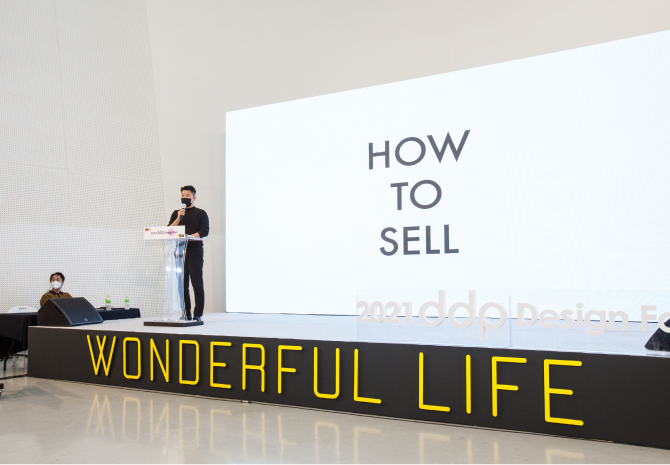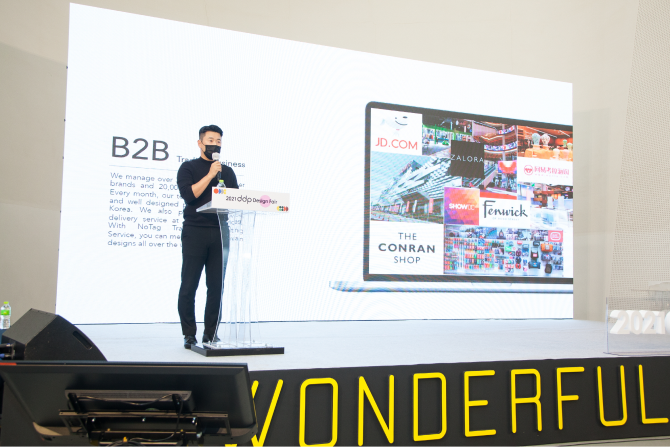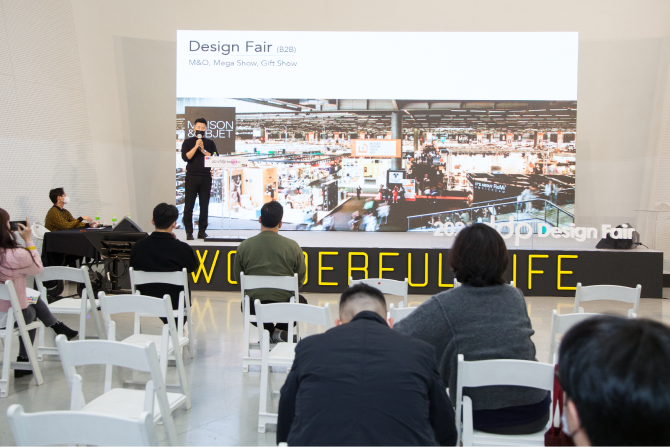Magazine
Design incorporates objects, people,
ideas based on the small pleasures of everyday life.
Meet your wonderful design world with the DDP Design Fair.




“Design , How to Sell?”
NoTag Korea CEO Woong Choi
What comes to your mind when you are asked the question “Where and how are you going to sell your design products?” One of the things many designers consider the most is product distribution. However, as a design major, most of them mainly focus on how to design things and do not think about how to distribute their products to customers. That’s why in many cases even well-designed products remain stacked in warehouses. In this regard, I would like to talk about the distribution of design, especially overseas distribution. In Korea, after designers, makers, or small and medium-sized enterprises create design products, they sign a contract with a trading company or a trading agency to sell their products. After signing the contract, a contract is made with an exclusive distributor for each country or region. The exclusive distributor supplies and exports the products to other wholesalers in the area, and the wholesalers supplies the products to retailers. This is how most consumer goods are exported. However, design products do not follow this kind of distribution structure. Therefore, when the advisors of KITA or KOTRA or general trading companies communicate with designers, in most cases, no progress is being made in the negotiations, and the project gets put on hold. In fact, the most common way was to showcase the company's products to large trade fairs such as Maison & Objet, meet with buyers across the globe, sign contracts with them to export its products. However, things have changed a lot over the recent two to three years since the outbreak of the COVID-19 pandemic. Many international fairs have disappeared from the calendar. Meanwhile, Maison & Objet has been hosting its virtual fair successfully for more than five years, way before the COVID-19 pandemic began. Thanks to its efficient operation, designers could sell their products through the online store, and buyers could place orders and view detailed information about the products. This allows designers to participate in the fair and meet buyers with a low fee. Over the last two years since the outbreak of the COVID-19 pandemic, there have been Korean companies selling design products and seeing high sales through various cross-border e-commerce platforms where designers themselves become export and distribution experts and make inroads into the global market. I recommend designers to start selling their products through these platforms to expand their global market share by twice to ten times. There are no intermediaries since designers themselves can sell and manage products on the platform. We are in the era where designers can find and leverage distribution channels as much as they put effort into design or product quality. We can say that this kind of system is more advantageous to young makers or designers who can quickly learn new technologies than small and medium-sized enterprises or large corporations.
| 이전글 | Besides products, what else do successful crowdfunding projects sell? |
|---|---|
| 다음글 | Turning waste into money. Making recycling fun. |







